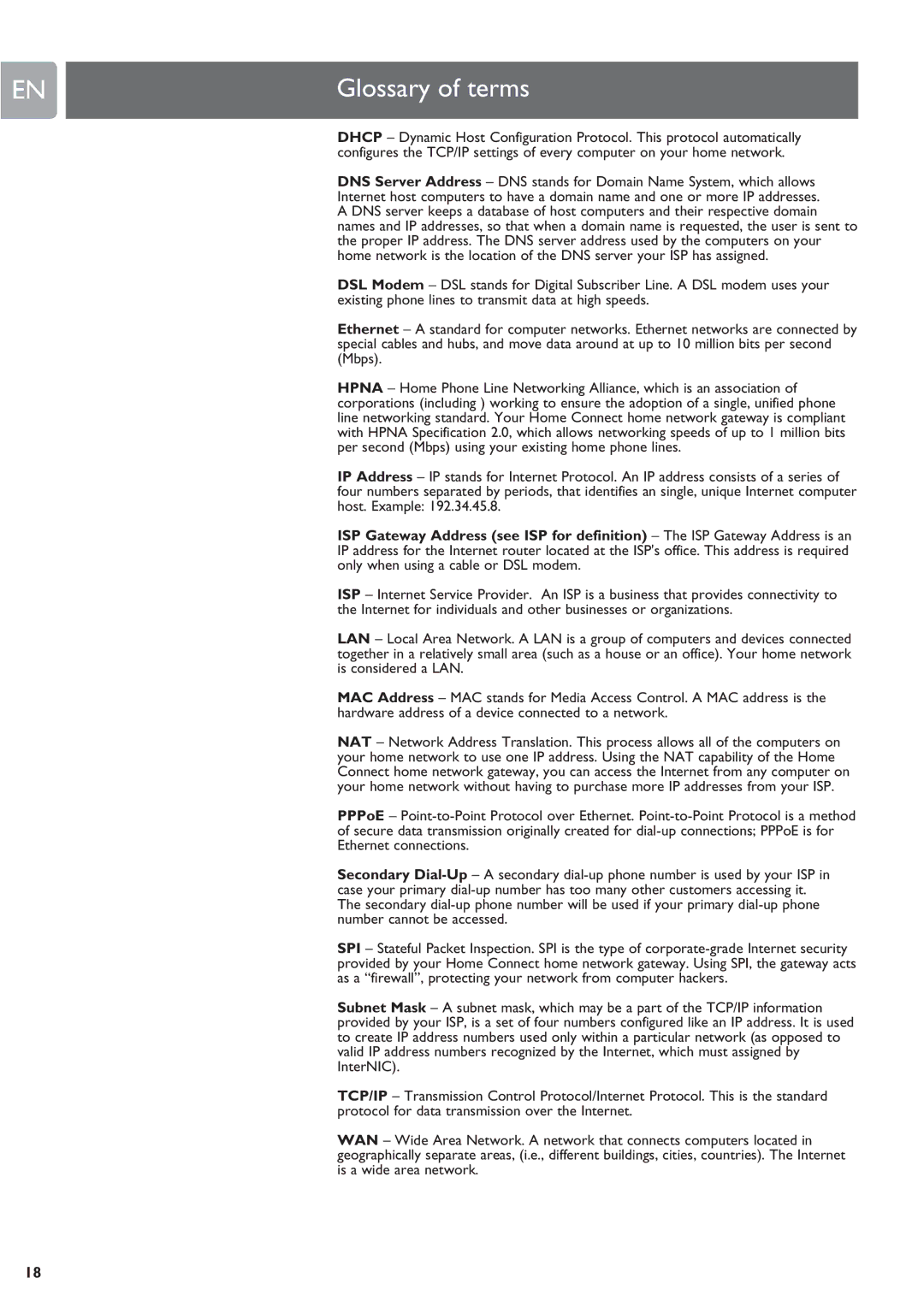EN | Glossary of terms |
|
|
DHCP – Dynamic Host Configuration Protocol. This protocol automatically configures the TCP/IP settings of every computer on your home network.
DNS Server Address – DNS stands for Domain Name System, which allows Internet host computers to have a domain name and one or more IP addresses. A DNS server keeps a database of host computers and their respective domain names and IP addresses, so that when a domain name is requested, the user is sent to the proper IP address. The DNS server address used by the computers on your home network is the location of the DNS server your ISP has assigned.
DSL Modem – DSL stands for Digital Subscriber Line. A DSL modem uses your existing phone lines to transmit data at high speeds.
Ethernet – A standard for computer networks. Ethernet networks are connected by special cables and hubs, and move data around at up to 10 million bits per second (Mbps).
HPNA – Home Phone Line Networking Alliance, which is an association of corporations (including ) working to ensure the adoption of a single, unified phone line networking standard. Your Home Connect home network gateway is compliant with HPNA Specification 2.0, which allows networking speeds of up to 1 million bits per second (Mbps) using your existing home phone lines.
IP Address – IP stands for Internet Protocol. An IP address consists of a series of four numbers separated by periods, that identifies an single, unique Internet computer host. Example: 192.34.45.8.
ISP Gateway Address (see ISP for definition) – The ISP Gateway Address is an IP address for the Internet router located at the ISP's office. This address is required only when using a cable or DSL modem.
ISP – Internet Service Provider. An ISP is a business that provides connectivity to the Internet for individuals and other businesses or organizations.
LAN – Local Area Network. A LAN is a group of computers and devices connected together in a relatively small area (such as a house or an office). Your home network is considered a LAN.
MAC Address – MAC stands for Media Access Control. A MAC address is the hardware address of a device connected to a network.
NAT – Network Address Translation. This process allows all of the computers on your home network to use one IP address. Using the NAT capability of the Home Connect home network gateway, you can access the Internet from any computer on your home network without having to purchase more IP addresses from your ISP.
PPPoE –
Secondary
SPI – Stateful Packet Inspection. SPI is the type of
Subnet Mask – A subnet mask, which may be a part of the TCP/IP information provided by your ISP, is a set of four numbers configured like an IP address. It is used to create IP address numbers used only within a particular network (as opposed to valid IP address numbers recognized by the Internet, which must assigned by InterNIC).
TCP/IP – Transmission Control Protocol/Internet Protocol. This is the standard protocol for data transmission over the Internet.
WAN – Wide Area Network. A network that connects computers located in geographically separate areas, (i.e., different buildings, cities, countries). The Internet is a wide area network.
18
